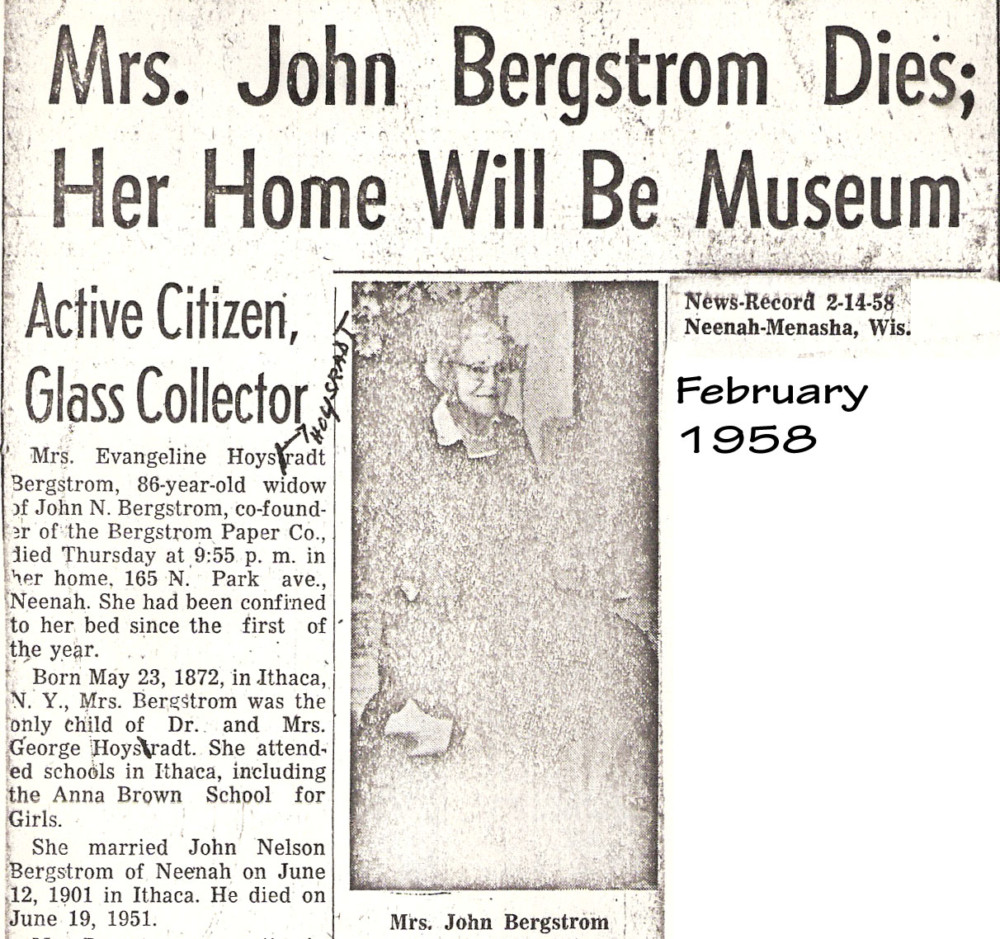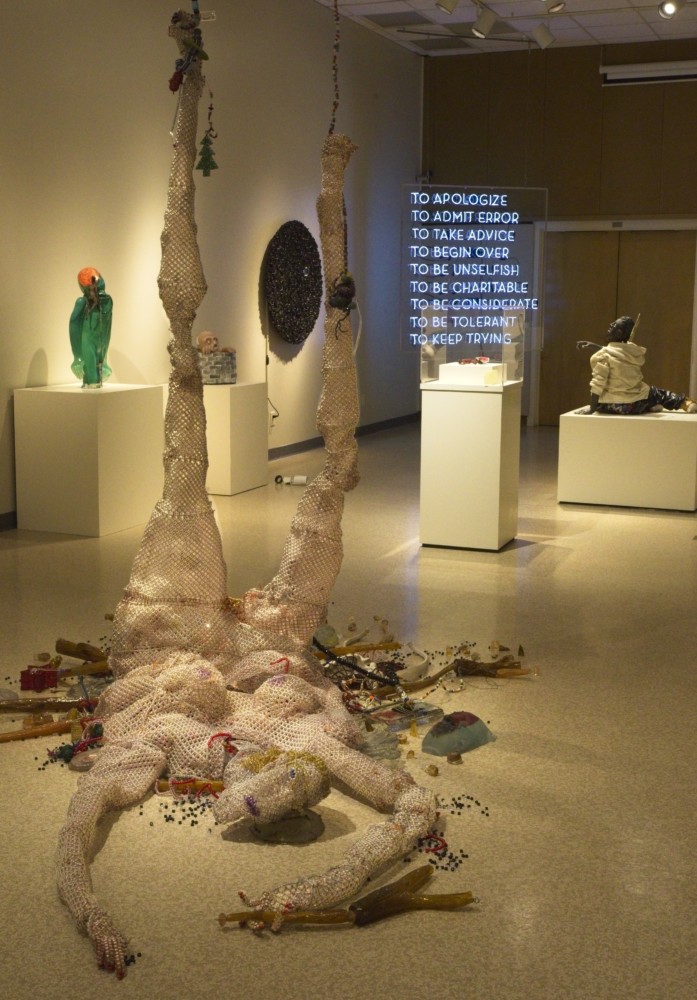Looking Through the Glass
The Bergstrom-Mahler Museum of Glass celebrates 60 years
The Bergstrom-Mahler Museum of Glass in Neenah is celebrating its 60th anniversary in 2019. This year also marks 60 years of the museum’s positive impact on the Fox Cities community.
The museum’s mission is to engage, excite and educate regional and global audiences using world renowned glass paperweights, glass collections and changing exhibitions. With the largest collection of glass paperweights in the world, The Bergstrom-Mahler Museum has made a name for itself while showing that a museum can be more than just a place for artwork to sit.
“The arts can define a city and create a sense of place. They can make it a destination, contribute to the quality of life a community offers and the cultural ambiance that signifies a well-rounded community,” Executive Director Jan Smith says. “I believe the museum has contributed in this way to the quality of life in the Fox Cities.”
The Start of the Museum of Glass
 There would be no Bergstrom-Mahler Museum of Glass if a young girl had not discovered her interest in paperweights more than 100 years ago. Evangeline Bergstrom frequently visited the home of her grandparents’ where her grandmother’s paperweight captivated her attention. After her grandmother passed away, the paperweight was lost and never recovered. When Bergstrom was 63, she stumbled upon a paperweight that looked similar to the one she loved so much as a child. From then on, she began to collect paperweights.
There would be no Bergstrom-Mahler Museum of Glass if a young girl had not discovered her interest in paperweights more than 100 years ago. Evangeline Bergstrom frequently visited the home of her grandparents’ where her grandmother’s paperweight captivated her attention. After her grandmother passed away, the paperweight was lost and never recovered. When Bergstrom was 63, she stumbled upon a paperweight that looked similar to the one she loved so much as a child. From then on, she began to collect paperweights.
Within a few years, Bergstrom had become an expert at identifying antique paperweights. In 1939, her extensive collection of over 200 weights was displayed at The Art Institute of Chicago. When her husband, John Nelson Bergstrom, passed away in 1951 he willed his home to the City of Neenah for use as a free-admission public museum after his wife passed away. The museum officially opened on April 5, 1959 as the John Nelson Bergstrom Art Center and Museum.
In 2011, the board and staff of the museum made the decision to only exhibit glass, and in 2013 the name was officially changed to the Bergstrom-Mahler Museum of Glass. The new name reflected this change as well as the instrumental roles played by Ernst and Carol Mahler who were both founding members of the museum.
Ernst Mahler, who was the original board president, made a prediction during the grand opening of the museum that turned out to be true.
“This museum will be one of the great cultural centers in Wisconsin and should be the pride of Neenah,” he said. “It will grow just as fast as the people of Neenah want it to grow.”
Connecting a Community
The Bergstrom-Mahler Museum of Glass is dedicated to community involvement. It hosts monthly classes and programs such as art activities days, which are walk-in creative workshops that allow people of all ages to learn how to work with glass.
“Specific programs serve underserved youth audiences,” Smith says. “In collaboration with Rotary Clubs, grant programs have supported the opportunity for women and families experiencing domestic violence to have a successful experience making a glass object in the studio.”
The museum has chosen exhibits that reflect social issues in current media and express them through their work. One example includes their exhibit “Sharper Edges: Women Working on the Edge of Glass” which confronted the stigmatism about women in the workplace and highlighted the strengths and thoughtfulness of women as well. The current exhibit “Reflecting Perspectives: Artists Confront Issues of Diversity and Inclusion” explores how artists use the power of their art to promote diversity and inclusion.
“I love that the museum is committed to pushing the envelope by using the lens of an artist and their art to explore important conversations about complex social and cultural issues, and to be intentional about creating a safe space to do that,” says Future Neenah Executive Director Nikki Hessel.
Guided tours for students K-12 explore not only the art, but the science behind glass and glass making. The museum also has badge programs for Girl and Boy Scout groups. Summer art camps are also available for children to attend.
“The museum has been a place for field trips,” says Jennifer Stevenson, marketing and communications director for the museum. “While that has diminished over the years, we’ve reached out in other ways by offering programs for students with special needs, after school art activities, and even job shadowing so that people can see what life is like working in a museum.”
Additionally, every year the museum hosts a month-long exhibit of work made by local high school students who have participated in workshops at the museum. “It provides a sense of pride and accomplishment for these students,” Smith says.
For 60 years, the Bergstrom-Mahler Museum has been a destination for guests to relax and experiment with their creativity, but the museum has also become a place for healing.
“We have been a destination of hope and tranquility for cancer patients, families visiting loved ones in hospice care, and have offered workshops for those suffering with PTSD (post traumatic stress disorder),” Smith says.
Celebrating 60 Years
The museum is celebrating its 60th anniversary in numerous ways. There will be a series of community talks about the museum’s evolution over the last six decades. A number of visiting glass artists whose art has previously been displayed in the museum will return to speak or demonstrate their work.
The first featured artist will be Joyce Scott, from September 18-22. Scott, whose work is currently featured in the museum’s “Reflecting Perspectives” exhibit, received the Visionary Artist Award from the Smithsonian this year as well as the Lifetime Achievement Award by the Glass Art Society in 2016. There will be a diversity and inclusion themed fundraising dinner featuring Scott as the special guest.
The museum will release an anniversary DVD titled “Searching For Excellence/Leaving a Legacy” that will include lectures and discussions about the impact a long term donor might have on a museum.
The museum recently received a grant from the Walter Alexander Foundation so that they are able to upgrade the capacity torches in the flameworking studio. This studio was created in 2005 to provide information and workshops on paperweight making and beadmaking.
Visitors can expect to see the theme of artists tackling controversial social issues continue as the museum schedules more exhibits and featured artists.
The Bergstrom-Mahler Museum of Glass has not only fulfilled its mission to engage, excite and educate, but it has also made a lasting impression on the community throughout the years.
“I think sometimes people have a perception that museums are only for certain people, but that’s definitely not who we are,” Stevenson says. “We are open-minded and accepting and we want people to enjoy the beautiful art we have and the beautiful setting we have right on Lake Winnebago.”
Learn more
The Bergstrom-Mahler Museum of Glass is open six days a week, completely free of charge. For information on upcoming exhibits and programs, visit bmmglass.com.












Leave a Comment